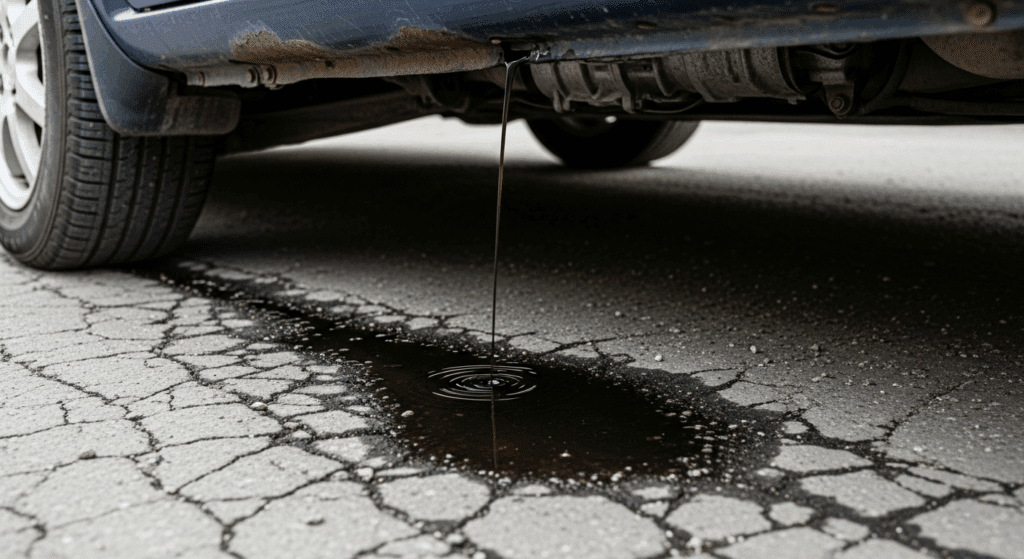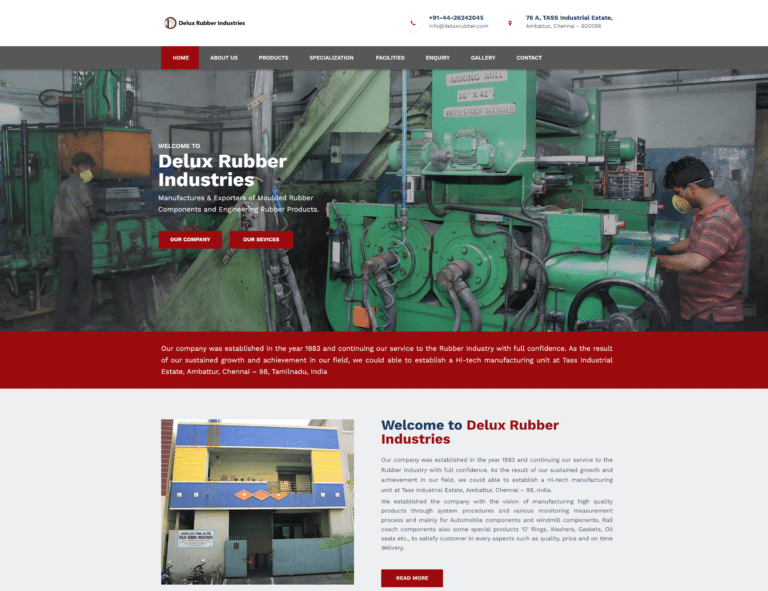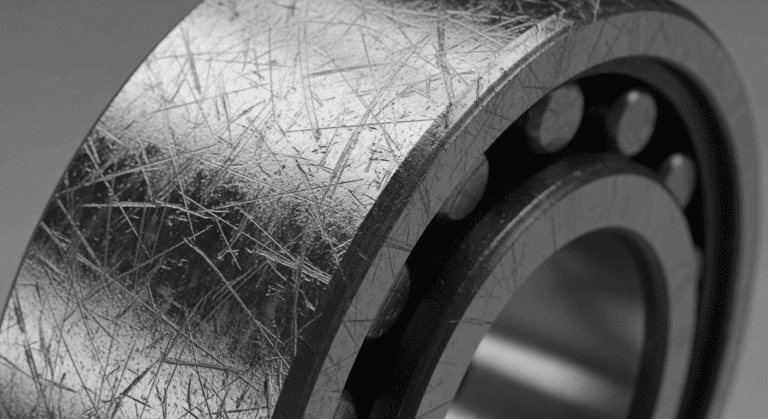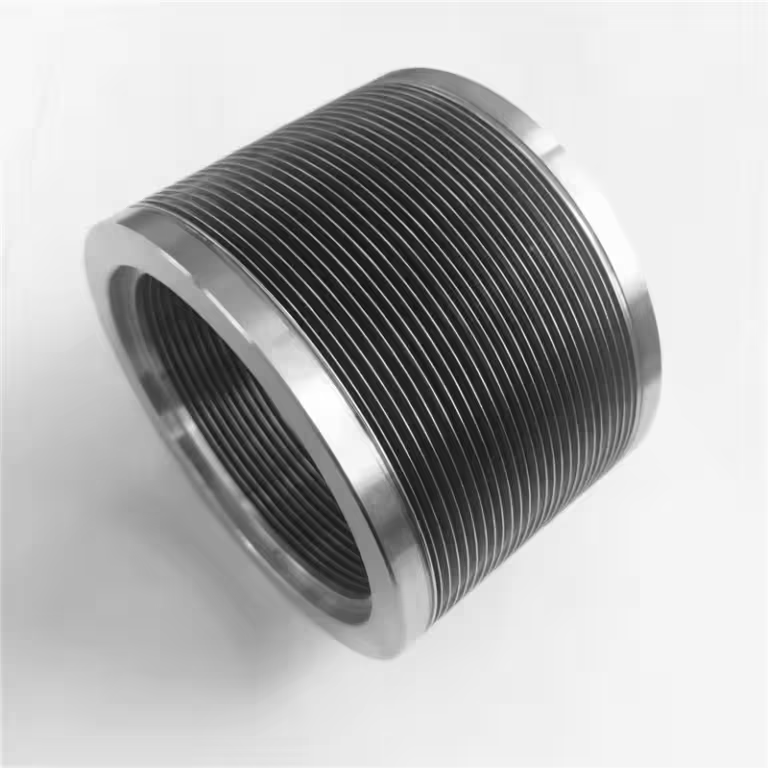Yes, a water pump can leak even when your engine is off. A faulty water pump seal or damaged housing doesn’t need engine pressure to drip coolant—gravity alone can cause steady leaking from a compromised pump.
The key is understanding what different leak patterns tell you about your pump’s condition. Whether coolant drips when your car sits overnight or only appears after driving reveals important clues about the severity and location of the damage.

Interpreting Leaks by Engine State
Leaking When the Engine is Off and Cold
A water pump leak that happens when your engine has been sitting cold for hours indicates serious seal failure. This is actually the most concerning type because it means the damage is severe enough that coolant escapes without any pressure at all.
You’ll typically spot a puddle of green, orange, or pink fluid directly under the water pump area. The leak might be slow—just a few drops per hour—but it’s constant and will gradually drain your cooling system.
Leaking Immediately After Engine Shutdown
Coolant that drips for 5-30 minutes after you turn off your engine signals a different problem. The heated coolant expands and creates pressure in the system, forcing fluid through small cracks or worn seals that might stay closed when everything’s cold.
You might hear a faint hissing or dripping sound from under the hood during this time. The leak usually stops once the engine cools down and the pressure drops back to normal.
Leaking Only When the Engine is Running
If you only see coolant dripping while your engine runs, the pump’s impeller shaft seal is likely starting to fail. The spinning motion and system pressure work together to push coolant past the weakened seal.
Check for coolant spray patterns on nearby engine components. Running leaks often fling droplets onto belts, hoses, and the underside of your hood rather than forming neat puddles.
Intermittent Leaks / Coolant Residue
Sometimes you won’t see active dripping but notice dried coolant streaks or crystallized deposits around the pump. This crusty white or colored residue forms when small amounts of coolant evaporate, leaving minerals behind.
These “ghost leaks” often happen only under specific conditions—maybe when you accelerate hard, hit a bump, or when the temperature outside changes dramatically.
Why a Water Pump Leaks When the Engine is Off
- Worn shaft seal failure: The main seal around the pump’s rotating shaft deteriorates over time from constant heat cycles and friction. Once it cracks or hardens, it can’t hold coolant back anymore.
- Corroded pump housing: Years of coolant flowing through aluminum or cast iron creates internal corrosion. This eats away at the metal, creating tiny holes that let coolant seep through.
- Damaged gasket between pump and engine block: The flat gasket that seals the pump to your engine can crack, tear, or compress unevenly. This creates gaps where coolant escapes regardless of engine operation.
- Cracked weep hole drainage: Water pumps have a small weep hole designed to alert you to seal failure. When the internal seal fails, coolant drains through this hole even with the engine off.
- Bearing failure causing seal damage: Bad bearings let the pump shaft wobble, which destroys the seal from the inside out. The misalignment creates permanent gaps that leak continuously.
What to Do If You Find a Leak
- Check coolant level immediately: Open your coolant reservoir (when the engine is cold) and verify the level. Running low on coolant can cause catastrophic engine damage within minutes.
- Mark the leak location: Place cardboard under your car overnight to pinpoint exactly where coolant drips. This helps mechanics diagnose the problem faster.
- Measure leak severity: Count how many drops fall per minute or measure the puddle size. A few drops per hour might be manageable short-term, but steady dripping requires immediate attention.
- Add coolant as a temporary measure: Top off with the correct coolant type (check your owner’s manual) to prevent overheating. This buys you time but doesn’t fix the underlying problem.
- Schedule immediate repair for active leaks: Water pump replacement typically takes 2-4 hours. Driving with a leaking pump risks overheating, warped cylinder heads, or complete engine failure.
- Consider replacing the thermostat and belts simultaneously: Since accessing the water pump requires significant disassembly, replacing related components now saves labor costs later.
FAQs
Can I drive with a leaking water pump?
You can drive short distances if the leak is minimal and you monitor coolant levels closely. However, any significant leak requires immediate repair since overheating can destroy your engine within minutes.
How much does water pump replacement cost?
Water pump replacement typically costs $300-$800 including parts and labor. The pump itself costs $50-$200, while labor varies based on how difficult your specific engine makes access.
Do water pump stop-leak products actually work?
Stop-leak products provide temporary relief for minor seepage but won’t fix mechanical failures. They work by swelling rubber seals, which might buy you a few weeks but can also clog your radiator.
Why does my new water pump still leak?
New pumps can leak due to improper installation, wrong gasket placement, or warped mounting surfaces. Sometimes the leak isn’t from the pump itself but from nearby hoses or freeze plugs.
How long do water pumps typically last?
Most water pumps last 60,000-100,000 miles. Pumps driven by the timing belt often get replaced during timing belt service as preventive maintenance since the labor overlaps completely.




